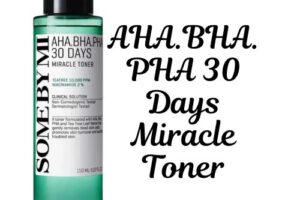Diet and Clear Skin: Key Foods to Eat and Avoid
When it comes to achieving clear, healthy skin, the right diet can be a powerful tool. While skincare products play a vital role, certain foods can either support or hinder your skin’s natural balance. Some foods may promote inflammation and contribute to acne, while others contain nutrients that help to calm, repair, and protect the skin. In this guide, we’ll explore the best foods to embrace for glowing, clear skin and the ones to limit to avoid breakouts. By understanding how your food choices affect your skin from within, you can make dietary adjustments that support a complexion that feels as good as it looks.
Foods to Avoid for Clearer Skin

| Food Category | Details |
|---|---|
| Dairy (Milk Products) | Contains IGF-1 hormone and sebum-stimulating amino acids; skim milk may be more problematic than whole milk. |
| High Glycemic Foods | Fast-digesting carbs (e.g., sugary cereals, white bread, cookies) spike insulin, increasing oil and hormone levels. |
| Chocolate | Not proven to cause acne directly, but milk and sugar in some chocolates may trigger breakouts in sensitive skin. |
Dairy (Milk Products)
Dairy products, especially skim milk, may contribute to acne. The reasoning behind this is related to hormones in milk, particularly IGF-1 (Insulin-like Growth Factor-1) and specific amino acids like leucine, which are thought to stimulate sebum production. Sebum, or skin oil, can clog pores and lead to acne, especially in those sensitive to these effects. While this doesn’t mean you need to cut out dairy entirely, reducing intake or switching to dairy alternatives may help.
High Glycemic Foods
Fast-digesting carbs like sugary cereals, white bread, and cookies can spike insulin levels. This insulin surge is followed by an increase in androgen hormones, which can lead to more oil production and potentially worsen acne. By avoiding or limiting foods that quickly raise blood sugar, you can help keep insulin levels steady, which may benefit skin clarity and oil balance.
Chocolate
Chocolate’s link to acne is a bit more controversial. While there isn’t strong evidence that chocolate itself directly causes acne, certain ingredients in milk chocolates, like sugar and dairy, may pose a problem. For some, the sugar content can lead to breakouts, and milk products may have a similar effect. If you love chocolate, you might want to try darker varieties with less sugar and dairy to see if it makes a difference.
Foods to Include for Clearer, Healthier Skin

| Food Type | Key Ingredients & Benefits |
|---|---|
| Fatty Fish (Salmon, Sardines) | High in omega-3 fatty acids, which help reduce inflammation and support acne management. |
| Cruciferous Vegetables (Broccoli) | Rich in antioxidants like sulforaphane, which combat skin aging, with low leucine levels to help regulate sebum production. |
| Soy Products | Contains isoflavones that may balance hormones, potentially reducing DHT levels linked to acne, and support collagen for firmer skin. |
| Red Grapes and Red Wine | Resveratrol-rich, an antioxidant that helps reduce acne-causing bacteria, protects against UV damage, and prevents early signs of aging. |
- Fatty Fish (Salmon, Sardines)
- Why It’s Beneficial: Fatty fish are loaded with omega-3 fatty acids, which are essential for reducing inflammation in the body, including the skin. Chronic inflammation is linked to various skin issues, including acne, so consuming omega-3-rich foods can help to calm skin and reduce breakouts.
- How It Helps Acne and Skin Conditions: Omega-3s can balance oil production and hydration levels in the skin, which is beneficial for managing acne-prone skin. This nutrient also supports skin cell membranes, helping to keep them soft and supple.
- Cruciferous Vegetables (Broccoli)
- Why It’s Beneficial: Vegetables like broccoli contain sulforaphane, a powerful antioxidant known for combating environmental skin damage and aging signs. Broccoli is also low in leucine, an amino acid that, in excess, can increase sebum production, making it ideal for those concerned with oil control.
- How It Helps Acne and Skin Conditions: The antioxidants in cruciferous vegetables help protect the skin from free radicals, pollutants, and sun exposure, all of which can contribute to acne and premature aging. Plus, the low leucine content helps prevent excessive oil production, reducing pore congestion.
- Soy Products
- Why It’s Beneficial: Soy contains isoflavones, which are plant-based compounds that act similarly to estrogen in the body. These isoflavones may help balance hormone levels, potentially reducing androgen levels like DHT (dihydrotestosterone), which is often linked to acne breakouts.
- How It Helps Acne and Skin Conditions: By helping to regulate hormones, soy can assist in reducing acne, particularly hormonal acne. Additionally, the compounds in soy are thought to support collagen production, which maintains skin firmness and elasticity—two key factors in anti-aging.
- Red Grapes and Red Wine
- Why It’s Beneficial: Both red grapes and red wine contain resveratrol, a potent antioxidant that offers multiple skin benefits, from helping to clear acne to reducing the signs of aging.
- How It Helps Acne and Skin Conditions: Resveratrol has antibacterial properties that can fight acne-causing bacteria, helping to prevent and reduce breakouts. It also offers protection against UV damage and environmental stress, slowing down aging signs like fine lines and dark spots. However, moderation is key, especially with red wine, to avoid excess sugar or alcohol that can counteract these benefits.
Essential Nutrients for Skin Health
- Proteins (Lean Meats, Eggs): Proteins are key for keeping skin firm and resilient. They support skin structure, aid in repair, and boost collagen production, which is essential for reducing fine lines and maintaining elasticity.
- Vitamins A, C, and E: These vitamins act as powerful antioxidants, protecting the skin from free radicals that cause aging. Vitamin A promotes clear skin by regulating cell turnover, Vitamin C brightens and supports collagen, and Vitamin E helps hydrate and repair. These vitamins are easily found in colorful vegetables and fruits like carrots, berries, and spinach.
- Minerals (Zinc and Iron): Zinc is known for its anti-inflammatory benefits, helping to control acne and maintain skin clarity. Iron supports blood flow and oxygenates the skin, helping to reduce dullness and enhance glow. Rich sources include seafood, leafy greens like spinach, and lean meats.
Additional Skin Care Tips
Taking care of your skin doesn’t have to be complicated, but consistency is key. Here are a few simple tips to keep your skin clear and healthy:
- Stick to Your Acne Treatment: Using products with benzoyl peroxide, salicylic acid, or retinoids can really help manage acne. These ingredients target the causes of acne like clogged pores, excess oil, and bacteria. Just be consistent and give them time to work—usually 4 to 6 weeks of daily use.
- Wash Your Face Regularly: Make it a habit to wash your face twice a day—once in the morning and once before bed. If you’ve been sweating, like after a workout, wash your face right away to remove sweat and prevent clogged pores. Also, choose face products labeled “noncomedogenic,” meaning they won’t block your pores.
- Avoid Touching Your Face: Touching or picking at acne can introduce bacteria from your hands, which may make things worse. It can also cause scarring. Keep your hands off your face and clean your pillowcases regularly to reduce the buildup of oil, dirt, and bacteria on your skin.














Post Comment